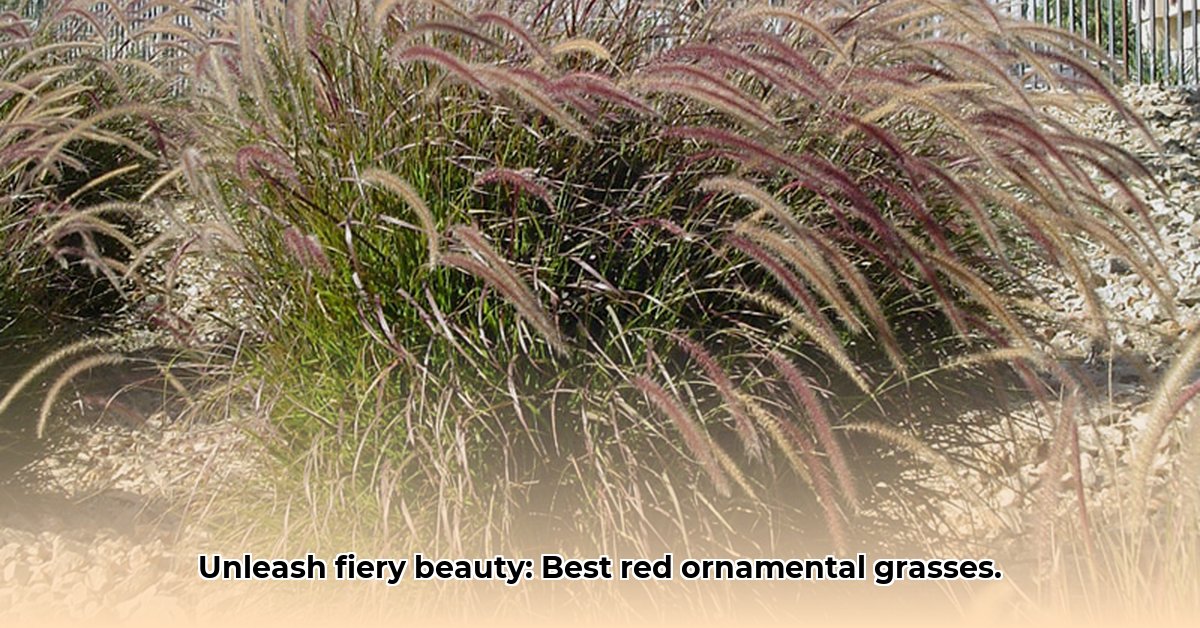
Want to add vibrant red pops to your garden? Red ornamental grasses offer drama, movement, and year-round interest. This guide simplifies choosing the perfect variety for your space, whether you're a seasoned gardener or a beginner. We'll cover everything from climate considerations to maintenance, ensuring your fiery additions thrive. For even more red grass inspiration, check out this helpful resource.
Choosing the Right Grass: Key Factors to Consider
Before selecting a red ornamental grass, understanding your garden's environment is crucial. This ensures a happy, healthy plant that complements your landscape, not causes problems.
Climate Zone: Matching Grass to Location
Your USDA Plant Hardiness Zone (find yours online using your zip code) dictates the average minimum winter temperature. This is vital for selecting grasses that can survive your local climate. A plant suited to a warmer zone won't thrive in a colder one, and vice versa.
Growth Habits: Clumping vs. Spreading
Red ornamental grasses are either clumping or spreading. Clumping grasses remain neatly contained, ideal for smaller spaces or containers. Spreading grasses expand their territory, requiring more maintenance but filling larger areas effectively. Consider your available space and your willingness to manage growth.
Mature Size and Growth Rate
Consider the mature height and width of each grass. A fast-growing, large variety might overwhelm a small space, while a slow grower requires patience. Accurate sizing prevents mismatches in your garden design. Refer to species profiles for specific dimensions and growth rates. A quick online search can also be your friend here.
Sunlight and Water Requirements
Each grass has specific sunlight and water needs. Some thrive in full sun, while others prefer partial shade. Similarly, water requirements range from drought-tolerant to moisture-loving. Matching the grass to your garden’s conditions is vital for its health.
Invasiveness: Balancing Beauty and Responsibility
Some attractive grasses can become invasive, outcompeting native plants. Research the invasiveness of your chosen grass to avoid ecological damage. Prioritize non-invasive or low-invasiveness options whenever possible.
Species Profiles: Top Red Ornamental Grasses
The following table compares popular red ornamental grasses, highlighting key characteristics:
| Grass Name | Mature Height (ft) | Mature Spread (ft) | Growth Rate | Sunlight | Water Needs | Invasiveness Risk | Notes |
|---|---|---|---|---|---|---|---|
| Pennisetum setaceum | 3-5 | 2-3 | Fast | Full sun | Well-drained | Medium | Stunning purple plumes, but requires monitoring for spread. |
| Imperata cylindrica 'Rubra' | 1-2 | 1-2 | Moderate | Full sun to part shade | Moderate | High | Intensely red foliage, needs careful containment. |
| Muhlenbergia capillaris | 2-3 | 1.5-2 | Moderate | Full sun | Drought-tolerant | Low | Beautiful pink plumes, low-maintenance and less invasive. |
| Miscanthus sinensis 'Purpurascens' | 6-8 | 4-6 | Moderate | Full sun | Moderate | Low | Tall, graceful plumes; a good choice for larger gardens. |
| Calamagrostis x acutiflora 'Karl Foerster' | 4-6 | 2-3 | Moderate | Full sun to part shade | Moderate | Low | Upright, airy plumes; excellent for low-maintenance gardens. |
Planting and Care: Ensuring Thriving Grasses
Planting your chosen grass is straightforward. Prepare the soil, plant at the correct depth and spacing, and water thoroughly. Regular monitoring, removing stray shoots, and appropriate fertilization (avoid over-fertilizing) ensure healthy growth.
Troubleshooting: Addressing Common Issues
Yellowing leaves might indicate nutrient deficiency or improper watering; address these promptly. While pests are uncommon, vigilance is key. Early detection and treatment prevent severe issues.
Conclusion: Choosing Responsibly for a Vibrant, Sustainable Garden
Selecting red ornamental grasses requires careful consideration. Prioritize non-invasive species and match the grass to your garden conditions. Responsible selection ensures a beautiful and sustainable landscape for years to come. Remember, selecting the right grass is a balance of aesthetic appeal and ecological responsibility.